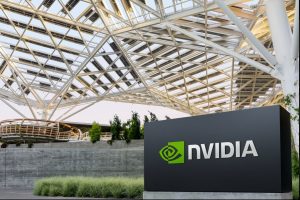CAMBRIDGE — In a landmark announcement that promises to redefine the Internet of Things (IoT) landscape, Arm has introduced the world’s first Armv9 edge AI platform. Engineered for on-device AI, this cutting-edge platform integrates the new Cortex-A320 CPU with the Ethos-U85 NPU, enabling AI models with over one billion parameters to run locally on devices. Designed to boost efficiency, performance, and security, the platform is already winning the backing of industry giants such as AWS, Siemens, and Renesas.
As IoT applications continue to expand—from industrial automation to smart cameras—the need to process complex AI workloads at the edge has become increasingly critical. Arm’s new platform leverages the advanced Armv9 architecture, incorporating features like SVE2 for enhanced machine learning performance and robust security measures including Pointer Authentication (PAC), Branch Target Identification (BTI), and Memory Tagging Extension (MTE). The Cortex-A320 CPU delivers a tenfold improvement in ML performance compared to its predecessor, while also providing a solid foundation for secure, intelligent IoT devices.
Complementing the hardware innovation is Arm Kleidi for IoT, a suite of compute libraries that simplifies the development of edge AI solutions. Integrated with popular AI frameworks like Llama.cpp and ExecuTorch, Kleidi for IoT enables developers to achieve up to 70% more performance on the new Cortex-A320. With over 20 million active Arm developers worldwide, the platform offers unprecedented flexibility, ensuring compatibility with both high-performance and energy-constrained devices, and reducing time-to-market for next-generation IoT solutions.
The new Armv9 edge AI platform is set to become the catalyst for a new wave of IoT innovation. “The evolution of edge AI is accelerating, and advancements in Arm’s IoT computing architecture will bring new possibilities for intelligence at the edge,” said Miller Chang, President of Embedded Sector at Advantech. AWS’s Yasser Alsaied added, “The new Arm edge AI platform will enable our customers to run nucleus lite—a lightweight device runtime of AWS IoT Greengrass—on Armv9 technology, providing an optimized solution for building modern edge AI applications.”
Marco Carrer, CTO of Eurotech, emphasized the platform’s impact on IoT device performance, stating, “Arm’s new edge AI platform provides us with the foundation to build the next generation of rich IoT devices, with secure performance, energy efficiency, and software flexibility.” Renesas’ Daryl Khoo and Siemens’ Herbert Taucher echoed similar sentiments, highlighting the platform’s role in enabling scalable, high-performance AI applications across diverse sectors, from smart infrastructure to industrial automation.
Arm’s breakthrough marks a fundamental shift in how AI workloads are processed. By moving powerful AI capabilities from the cloud to the edge, the new platform reduces latency, enhances data privacy, and supports the growing demand for real-time intelligence in increasingly connected environments. With capabilities to run both large language models (LLMs) and smaller AI agents, the platform paves the way for innovative applications ranging from autonomous vehicles on factory floors to dynamic human-machine interfaces in smart cities.
As the future of AI continues to shift towards decentralization, Arm’s Armv9 edge AI platform stands as a critical enabler for the next generation of IoT devices, promising to drive advancements in security, performance, and intelligent automation on a global scale.
For more details on the new Cortex-A320 and the Armv9 edge AI platform, visit Arm’s blog and join the conversation on how this innovation is set to transform the IoT ecosystem.
In the context of AI, what’s the radical shift here?
The radical shift is moving powerful AI capabilities from the cloud to edge devices, enabling on-device processing of models with over a billion parameters using advanced Armv9 technology. This approach reduces latency, enhances privacy, and dramatically improves efficiency for IoT applications by integrating cutting-edge CPU and NPU innovations directly into intelligent devices.



















